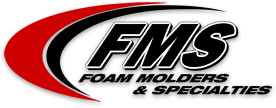How do you know whether to use thermoforming or injection molding as you start your project? When the results from both processes tend to look the same, it can be difficult to identify which is better suited for your project. Therefore, we have answered some of the most frequently asked questions regarding the two processes in hopes it will help you to decide which is better for you.
Q: So when do you choose thermoforming instead of injection molding?
A: There is not one simple answer. Volume plays a huge role, given the difference in tooling cost. Lower volumes favor thermoforming since tooling costs are only 10% to 15% the cost of injection molding tooling. Not only can you achieve injection molding standards, they can often be exceeded. A Class “A” finish, molded-in-texture thermoformed part generally looks better than an injected molded part.
Q: Why?
A: The issues of swirls, sink marks, weld lines, gate marks, etc. are not present with thermoforming. On cars, plastic bumpers and plastic lower side panels are typically thermoformed because we can consistently achieve the Class “A” finish on a big part where injection molding might not.
Q: How do I know if thermoforming will fit my design?
A: For the most part you can duplicate any part design that you can with injection molding, even creating shapes that were considered too complex for this process. For example, even though thermoforming can only mold precise features on one side, additional structural support and part nesting type features can still be added to the back side by bonding machined parts after forming.
Q: What are the differences between thermoforming and injection molding?
A: Thermoforming’s greatest advantage is that it involves fewer parts and tooling than injection molding and therefore is more cost-effective. It is an economical choice that can be used for small and medium production runs, with low cost tool modifications. The detail that can be reproduced by the mold gives forming and shaping of parts an advantage over other forms of production.
